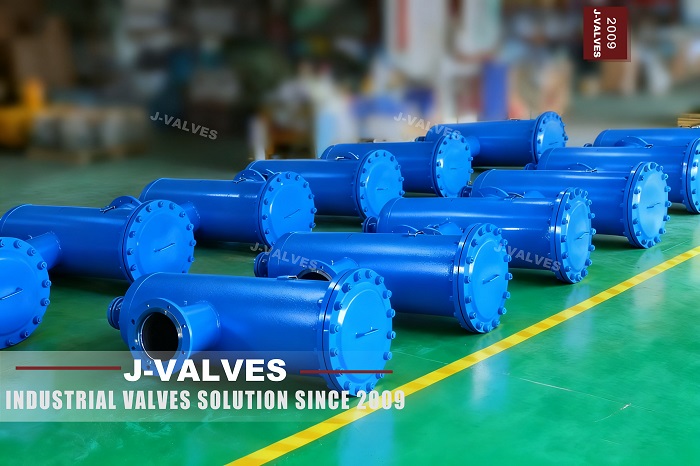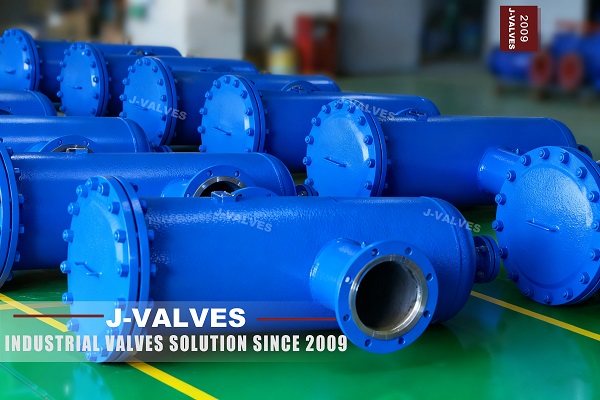Views: 0 Author: J-VALVES Publish Time: 2025-10-31 Origin: Site









In industrial fluid conveyance systems, the presence of impurities may cause equipment wear, blockage, or even failure. As an efficient pipeline filtration device, basket strainers have become key components in fields such as petroleum, chemical engineering, and water treatment, relying on their structural advantages and reliable performance.
Basket strainers are a type of straight-through pipeline strainers. Their core structure consists of a cylinder, a basket-shaped filter element (filter basket), a flange cover, and other components. After fluid enters the cylinder from the inlet, it must pass through the filtration of the filter basket. Impurities are trapped in the basket, and clean fluid flows out from the outlet. When impurities need to be cleaned, the flange cover can be opened to take out the filter basket, enabling quick maintenance.
This structural design endows it with two major technical characteristics:
High Filtration Precision: The mesh count of the filter basket (number of meshes per unit area) can be customized according to requirements, ranging from dozens to hundreds of meshes. It can effectively filter particulate impurities and suspended solids in liquids.
Low Flow Resistance Loss: The straight-through flow channel design ensures minimal pressure loss when fluid passes through, safeguarding the stable flow rate of the system.


The filter baskets of basket strainers are made of stainless steel (e.g., 304, 316L) or special alloy materials. They feature corrosion resistance and high strength, and can operate stably for a long time under high-pressure and high-temperature working conditions, ensuring that downstream equipment is protected from impurities.
The quick-opening flange cover design of basket strainers allows for rapid disassembly and cleaning. No complex tools are needed to take out the filter basket for impurity cleaning, which significantly shortens downtime for maintenance and reduces operation and maintenance costs.
Basket strainers can be adapted to scenarios ranging from normal-temperature and normal-pressure civil water treatment to high-temperature and high-pressure petroleum refining. Their caliber specifications cover the full range from DN50 to DN500+, meeting the flow and pressure requirements of different pipeline systems.
In crude oil transportation and chemical raw material refining processes, basket strainers can filter sand particles and rust in crude oil, as well as polymer impurities in chemical liquids. They protect key equipment such as pumps, valves, and heat exchangers, and prevent equipment wear and blockage caused by impurities.
Municipal Water Supply: Filter sediment and algae in raw water to improve water quality and reduce the load of subsequent treatment processes.
Industrial Circulating Water: Trap corrosion products and microbial slime in circulating water to ensure the heat exchange efficiency of cooling towers and heat exchangers.
In food and beverage production and pharmaceutical processes, basket strainers can filter particulate impurities in raw materials. They meet hygienic requirements (e.g., using 316L stainless steel with polishing treatment) to ensure product purity and safety.
Filtration Precision: Selected based on the size of impurity particles in the fluid. For example, 50~100 meshes can be chosen for chemical raw material filtration, and 200~300 meshes for precision water treatment.
Working Pressure and Temperature: Must match the pressure rating (e.g., PN16, PN25) and medium temperature of the pipeline system to prevent material failure due to insufficient pressure resistance and heat resistance.
Material: For corrosive media, 316L stainless steel or fluorine-lined materials are preferred; for ordinary water media, 304 stainless steel can be selected.
Installation Direction: Install strictly in accordance with the flow direction mark of "Inlet - Filter Basket - Outlet" to avoid reverse installation leading to filtration failure.
Maintenance Space: Reserve sufficient space around the strainer to facilitate the opening of the flange cover and the removal of the filter basket.